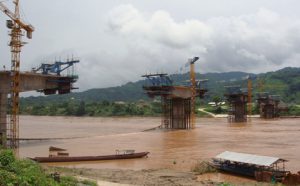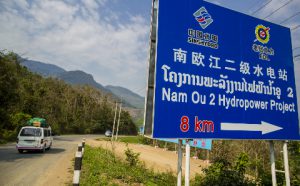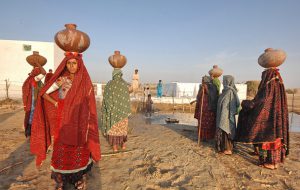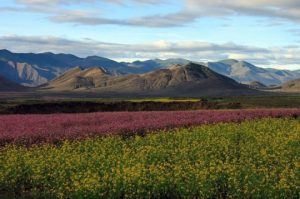When the livelihoods of 20 million of your citizens living in the Mekong River delta are threatened, along with 27% of your GDP, 90% of your rice exports and 60% of your seafood exports, what do you do? Especially when the sources of that threat, the governments of Laos and Thailand, don’t appear to be listening to your objections.
This is the challenge facing Vietnamese Prime Minister Nguyen Tan Dung as he tries to maintain cordial diplomatic relations with his fellow Mekong River Commission Council and Asean members, while at the same time ratcheting up pressure for a halt to construction of the giant US$3.8 billion,1,285 megawatt Xayaburi hydropower project and the smaller but equally controversial 260 megawatt Don Sahong dam, the first dams on the mainstream of the lower Mekong in Laos.
Speaking at the opening of the second Mekong River Commission (MRC) summit in Ho Chi Minh City in April, Prime Minister Dung said Laos was violating the 1995 Mekong Agreement, by which any mainstream project requires prior consultation.
Riding roughshod over the strong objections of Cambodia and Vietnam, Laos unilaterally launched construction of the Xayaburi project under Thai developer Ch Karnchang in 2012, without completing the prior consultation process. Then in September last year it announced the start of the Don Sahong Dam, this time avoiding the prior consultation process by claiming the project was not on the mainstream, a claim dismissed as untrue by all impartial observers.
Vietnam’s strategy is to rely on science. The country is pushing for the rapid completion of two scientific studies which it expects will provide independent confirmation that the Xayaburi and Don Sahong dams threaten "significant harm" to Cambodia’s and Vietnam’s national interests, thus allowing them to activate Article 7 of the Mekong Agreement and halt construction of mainstream dam projects.
Confirming this strategy Dung called for the MRC to accelerate its own study to resolve the impasse created by Cambodia’s and Vietnam’s refusal to agree to the Xayaburi project, a move later ignored by Laos. Both this study and Vietnam’s delta study are expected to be completed next year.
In another carefully orchestrated move clearly designed to broadcast Vietnam’s objections to the Xayaburi and Don Sahong dams the week before the summit, the People’s Aid Coordinating Committee (PACCOM), a Vietnamese government agency reporting to the prime minister’s office, organised a day-long workshop on the Xayaburi attended by Vietnamese scientists, National Assembly agencies, research institutes and other stakeholders.
The meeting called for three dramatic actions: the Lao government to temporarily suspend construction of the Xayaburi dam, the Thai government to cancel its "premature" power purchase agreement until there is regional consensus on hydropower projects on the Mekong mainstream, and for the Thai banks financing the project to reconsider their risk assessments and value their international reputation.
These unusually forthright demands, stage-managed by a Vietnamese government agency, show just how far Vietnam is prepared to go to stop the Xayaburi dam. The government agency followed up with letters to the big four Thai banks inviting them to send representatives to explain why they are financing the Xayaburi.
Anti-dam anger grows across South East Asia
Three days later another unprecedented demonstration of the burgeoning anti-Xayaburi sentiment took place when 40 Cambodian, Thai, Vietnamese and international NGOs issued a Declaration of Solidarity, setting a one-year deadline to stop construction of the Xayaburi. Issued "in support of the 60 million Cambodians, Laotians, Thais and Vietnamese whose lives and livelihoods are threatened by the Xayaburi dam", the deadline was based on the developer’s schedule which indicates that construction of the dam across the main body of the river will start around February 2015, "thereby causing major irreversible ecological and hydrological impacts on the entire lower Mekong River basin system".
The Declaration also supported Vietnam’s official position on the Xayaburi, "to defer it and all other projects on the Mekong mainstream for at least 10 years", and called on the Thai government to cancel the power purchase agreement for the Xayaburi.
Can construction of the Xayaburi Dam be stopped within a year, before it starts to cause irreversible damage to the entire lower river-basin system? (According to the developer, construction is between 23% and 30% complete).
It’s been done before, recently in neighbouring Myanmar. In September 2011, President Thein Sein’s decision to stop construction of the Chinese-backed Myitsone Dam on the Irrawaddy River shocked Beijing and signalled the start of the much-lauded democratisation process and a sharp brake on the creeping Chinese economic colonisation of Myanmar.
Anti-dam sentiment in Myanmar, Cambodia and Vietnam is rapidly catching up with that in Thailand, where the current government’s ill-conceived US$10 billion flood protection "non-plan" is stalled due to strong public protest against some 20 proposed dams. Vietnam has cancelled over 400 dam projects in the last 12 months, ending a decades-long love affair, while in Myanmar petitions are being sent to the Chinese and Thai governments to immediately halt six proposed dam projects on the Salween River (known as the Nu in China), one of the longest free-flowing rivers in the world.
And just after the Mekong Summit, Cambodia’s National Assembly held a hearing about the Don Sahong project which is likely to result in petitions against both dams being sent to key promoters, including the Thai banks financing the projects. According to Son Chhay, Chief Whip of the Cambodian National Rescue Party (CNRP), "most of our party’s elected MPs and senators are opposed to the Xayaburi and the Don Sahong dams because they threaten regional collaboration and pose the greatest risk to the Tonle Sap, the central pillar of Cambodian food security".
Huge risks for investors
Bangkok Bank, Kasikorn Bank, Krungthai Bank and Siam Commercial Bank, the Xayaburi’s main lenders, and PTT, which holds a 25% stake in the project, are all now facing an increasingly tough choice: Stop the Xayaburi now, either by suspending their syndicated loan or persuading the Thai government to cancel the power purchase agreement, or face the growing displeasure of the Vietnamese government and even greater losses when Vietnam eventually stops the project next year.
The Thai stakeholders have plenty at risk. The four banks all have expansion plans in Vietnam, while PTT is in an advanced stage of planning for a multibillion-dollar Vietnamese refinery project. To compound its dilemma, there have been media reports that PTT is even considering increasing its stake in the Xayaburi, in what can only be described as a clear case of politically motivated interference designed to decrease prime promoter Ch Karnchang’s exposure to this increasingly risky project.
Siam Commercial Bank chairman Anand Panyarachun, a strong promoter of sustainable development in the past, once called on Asean to reconsider its so-called principle of non-interference. What we need today is a proactive principle of ecological interference. Environmental impacts do not recognise sovereign borders. We need the four MRC members to tell China to pay attention to the impact its six dams on the upper Mekong are having downstream, and refrain from building more, and we need Thailand to join with Cambodia and Vietnam to persuade Laos to stop construction of the Xayaburi dam immediately.
This article was first published in the Nation.






